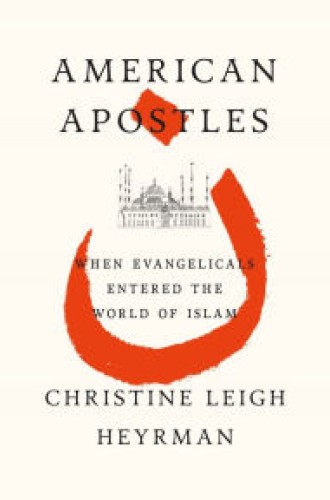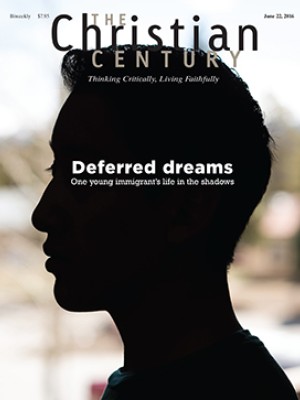Missionaries among Muslims
As rhetorical attacks against Muslims at home are combined with military assaults abroad, Americans would do well to ask ourselves why we believe what we do about Islam. The invention of Islam in the minds of Americans is not a 21st-century innovation: it grows from a long history of encounters between Christians and Muslims. Christine Leigh Heyrman elaborates one such encounter, which began 200 years ago.
In the early 1800s, evangelical zeal pulled a mix of devout Protestant missionaries to the Middle East. The confluence of a spacious piety and personal ambitions propelled these American seekers to strange lands, where spiritual adventures were entered into diaries, repackaged into reports from the evangelical front lines, and enthusiastically consumed by the American public. These narratives shaped perceptions of the Middle East and its inhabitants, establishing attitudes that would inform policies abroad and biases at home. The legacy of these narratives remains with us today, shaping our constructions of faith and politics across cultures.
Read our latest issue or browse back issues.
Heyrman, who teaches American history at the University of Delaware, tells of Protestant evangelicals instituting missionary societies to convert heathens and heretics in distant corners of the world. The Middle East held particular prominence in the Christian imagination as the site where past and future converged. This region was heralded as both the ancestral birthplace of the church and the place where the world’s denouement would unfold at God’s appointed time.
Pliny Fisk, Levi Parsons, and Jonas King are no longer household names. Yet these individuals were primary actors in the American encounter with Islam, and later with the Eastern Orthodox and Roman Catholic communities of the Levant. These missionaries presented themselves as champions of a gospel proclamation shorn of superstitions and undemocratic hierarchies. They traveled extensively, publishing and disseminating pamphlets. They went to extraordinary lengths to master the languages and traditions of indigenous populations. They engaged in theological conversations, as well as occasional disputations, with their hosts. They recorded their exploits in terms that would garner ongoing financial support from American and British benefactors, all the while delivering portraits of “the other” that enthralled audiences back home.
According to Heyrman, prominent evangelical missionaries conjured a vision of heroism that served a critical purpose in 19th-century American Protestantism. Christianity, and particularly evangelical Protestantism, was often judged as lacking in virility and dominated by women. Requirements to turn the other cheek and practice radical generosity did not mesh with the expansionist ambitions of a fledgling nation divinely endowed with a sacred vocation.
The missionary movement generated a manly image of the heroic martyr, the daring adventurer, and the fearless leader. As the ethos of “muscular Christianity” gained greater currency, the American apostle who traversed oceans and deserts emerged as the Protestant version of a saint. To lionize the missionary’s courage, Muslims were cast as implacable adversaries and served as the quintessential foil.
Protestant missionaries did not achieve the success that was anticipated in converting Muslims. The Ottoman Empire regarded conversion to Christianity as an act of apostasy, and the move entailed serious risks. More significantly, Protestant encounters with Muslim jurists did not generate public curiosity or inspire intellectual and spiritual inquiries. As a consequence, evangelical outreach shifted its focus toward Roman Catholic and Eastern Orthodox Christians.
Evangelical missionaries sought to uproot indigenous Christians from their ancestral traditions and practices, unleashing polemical assaults that branded Roman Catholics and Eastern Orthodox Christians as idolatrous and benighted. Anti-Catholic diatribes invoked caricatures going back to the 16th century. Not only did these tactics inflame ecumenical relations in the Middle East, they also kindled animosity among Americans who read the dispatches from overseas and found their anti-Catholic biases fortified. This antipathy was magnified as Roman Catholic immigration to the United States swelled in the 19th century.
Heyrman balances her account by contrasting the more accommodating approach of Parsons and Fisk with the pugnacious accounts penned by King. Parsons and Fisk went to considerable lengths to understand their hosts and discovered ethical and spiritual affinities with their so-called opponents. King showered contempt on all who did not share his dogmatic allegiances. Lamentably, it was King’s legacy that triumphed. His stature in and beyond evangelical quarters enabled him to influence American attitudes toward the Middle East, and, perhaps more ominously, his career “exemplified how evangelicals’ support for missions and their hatred of Catholicism came to feed off each other’s intensity.” As Heyrman notes,
It was no coincidence that zeal for foreign missions and opposition to Catholics gathered momentum during the nineteenth century. Twinned dynamos, together they came to define evangelical identity, instilling unity in a movement fractured by denominational differences, slavery, race, and class and temporarily ruptured by the Civil War and Reconstruction.
While evangelical efforts to conquer the Middle East fell far short of expectations, “the debacle abroad brought on campaigns to purge the homeland of perceived religious impurity and dissent.” Adversarial views of Roman Catholicism in the Middle East set the stage for the violent outbursts against Catholics that erupted in the 1830s in cities such as Boston and Philadelphia. Furthermore, the antipathy toward Islam that hardened in the wake of the earliest evangelical expeditions became a fixture within conservative Christian quarters, generating notions of an apocalyptic battle in which the West is pitted against Islam.
Heyrman’s account propels us to ask: Where are our fears and suspicions about Islam grounded? To what extent have the failures to impose our own political and economic will on distant people poisoned American attitudes and behaviors toward Muslim neighbors and blinded the public to the humanitarian plight of refugees? Heyrman reminds us yet again that domestic and international policies are entangled in the messy business of interreligious relations.






